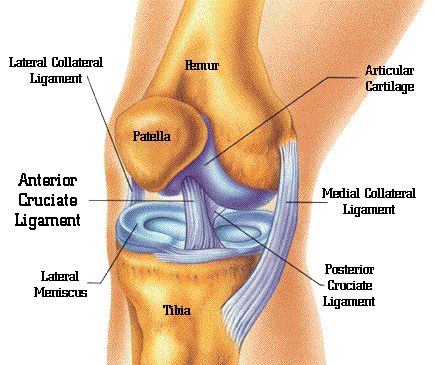Should I see a knee specialist for my ACL injury?
If you are experiencing below symptoms, you may want to consider to see a knee specialist:
- Feeling or hearing a pop in the knee at the time of injury.
- Pain on the outside and back of the knee.
- The knee swelling within the first few hours of the injury. This may be a sign of bleeding inside the knee joint. Swelling that occurs suddenly is usually a sign of a serious knee injury.
- Limited knee movement because of pain or swelling or both.
- The knee feeling unstable or giving out.
After an acute injury, you will probably have to stop whatever you are doing because of the pain, but you may be able to walk.
The main symptom of chronic ACL deficiency is the knee buckling or giving out, sometimes with pain and swelling. This can happen when an ACL injury is left untreated.
What is an anterior cruciate ligament (ACL) injury?
An anterior cruciate ligament, or ACL, injury is a tear in one of the knee ligaments that joins the upper leg bone with the lower leg bone . The ACL keeps the knee stable.
ACL Injuries range from mild, such as a small tear, to ligament tears completely.
Without treatment, the injured ACL is less able to control knee movement, and the bones are more likely to rub against each other. The abnormal bone movement can also damage the cartilage and can trap and tear the menisci that cushion the knee joints. This damage can lead to osteoarthritis.
Sometimes other knee ligaments or parts of the knee are also injured. This includes cartilage such as the menisci, or bones in the knee joint, which can be torn.
Cause of ACL Injury
Your ACL can be injured if your knee joint is twisted.
An ACL injury often occurs during sports. The injury can happen when your foot is firmly planted on the ground and a sudden force hits your knee. This can happen when you are changing direction rapidly, slowing down when running, or landing from a jump. Missing a step on a staircase is possible to injured the ACL. Like any other body part, the quality of the ACL becomes weaker with age.
How is an ACL injury diagnosed?
Your doctor will check for stability, movement, and tenderness in both the injured and uninjured knee.
You may need an MRI. An MRI can show damage to ligaments, tendons , muscles, and knee cartilage.
How is ACL injury treated?
Your knee will need to be checked by a doctor. It’s important to get treatment. If you don’t, the injury may become a long-lasting problem.
Your treatment will depend on how much of the ACL is torn, whether other parts of the knee are injured, how active you are, your age, your overall health, and how long ago the injury occurred.
There are three main treatment goals:
- Make the knee stable if it is unsteady, or at least make it stable enough to do your daily activities.
- Make your knee strong enough to do all the activities you used to do.
- Reduce the chance that your knee will be damaged more.
Full ACL tear needs to be reconstructed via arthroscopy.
Rehabilitation and treatment
Once stability and strength return and pain subsides, gradual introduction of activities such as stationary biking can be undertaken. Range of motion and strengthening exercises are an important part of rehabilitation. Swimming and other non-weight bearing exercises may be used until the strength returns to normal. Strengthening the muscles of the quadriceps, hamstrings, and calves will help to protect the anterior cruciate ligament. Proper conditioning before beginning high impact activities will also provide protection.
Long-term prognosis
ACL sprains that involve a complete tear often require surgery to reattach the ligament. Minor sprains can often be healed completely without surgery. Return to full activity may be a prolonged process and some activities may be limited.



